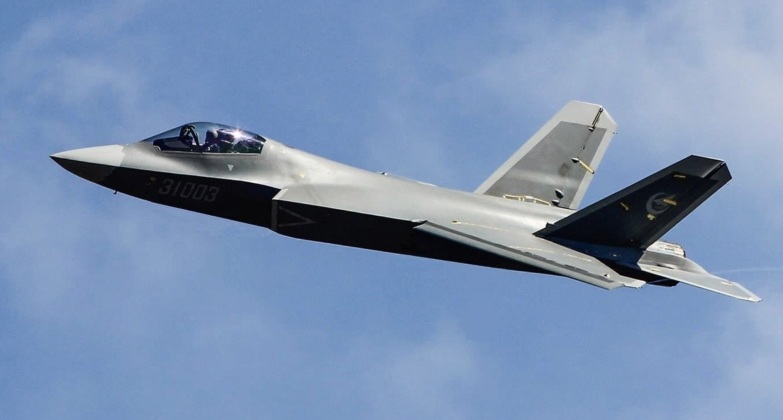Just three days after the first images of a new twin seat variant of China’s J-20 heavyweight fifth generation fighter were leaked, the first images of a second new fifth generation fighter unknown designation emerged. The new aircraft appears to be based on the FC-31 prototype which first flew in in October 2012, the status of which has long been uncertain with increasingly advanced variants of this aircraft having been seen flying over several years. The FC-31’s place in the Chinese People’s Liberation Army Air Force has long been uncertain, with some analysts speculating that it could serve as a lighter and cheaper counterpart to the J-20 while other assessments predicted that it would be focused on export markets and adapted for use on PLA Navy aircraft carriers. Incorrectly referred to as ‘J-21,’ J-31’ or even ‘J-35’ in a nod to the American F-35 which was also adapted for carrier use, the actual designation of the carrier based variant and of its land based counterpart remain uncertain.

While the J-20 was developed by the Chengdu Aircraft Industry Group, the FC-31 was developed by the rival Shenyang Aircraft Corporation which had traditionally primarily focused on developing improved indigenous derivatives of Soviet designs such as the J-16 and J-11B based on the Soviet Su-27 Flanker design. Chengdu had also developed the J-15 which is currently China’s only operational carrier-based fighter, and has a much larger airframe than the FC-31. The new stealth fighter is not expected to replace the J-15, but rather to fly alongside it in a complementary role much as the U.S. Navy’s F-35C stealth fighter will fly alongside its F-18E Block 3 Super Hornets. The new Chinese aircraft is one of just two fifth generation fighters developed for carrier operations to have flown, alongside the F-35, although Russia is thought to currently be developing a fifth generation fighter with vertical landing capabilities to deploy from smaller carriers. The FC-31-derived stealth jet is not expected to be deployed from China’s current carriers, but rather from future heavier models with electromagnetic catapult launch systems which will facilitate a much higher takeoff weight. The air wings of these carriers are expected to be among the most diverse in the world, rivalled only by those of U.S. Navy supercarriers, and alongside the J-15 and the new stealth fighter they will field J-15D electronic attack jets and a wide range of stealth drones for combat, reconnaissance and other missions. The possibility of a carrier-based derivative of the J-16 fighter has also been raised but remains highly uncertain.
